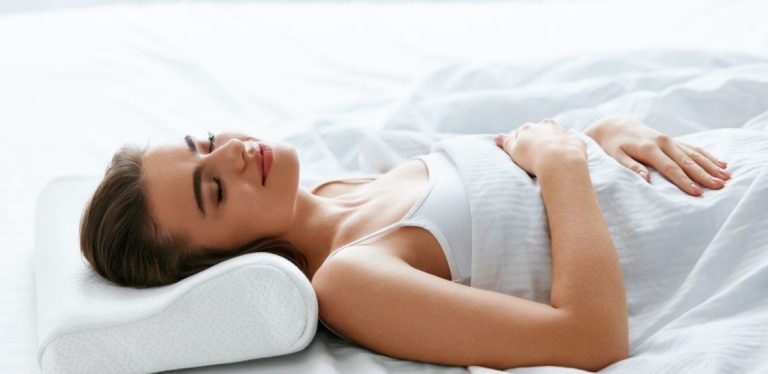A Good Pillow Can Make All the Difference
The right pillow can promote better quality sleep. Improved sleep can lead to increased productivity, energy, and a better mood. But how do you know what to look for in a pillow? The article below takes a look at different types of pillows and how to find the right pillow for your needs.
How the Right Pillow can Help your Sleep
If you use the wrong type of pillow, it might make sleeping less comfortable; this means you are likely to toss and turn. The more comfortable you are, the better you may sleep.
The right pillow helps support your head, shoulders, and neck. When your head and neck are in the correct position, it promotes better alignment for your entire spine.
Using the best type of pillow for how you sleep also helps relieve pressure and may reduce certain types of neck and shoulder pain.
When you sleep with a pillow that does not give you the correct support, it can lead to several problems, such as poor sleep quality, less sleep, and neck pain.
How do You Choose the Right Pillow?
There is no shortage of pillows on the market. With all the different choices, it can be challenging to figure out what is best. When selecting the right pillow for you, consider the following factors:
Think About your Sleep Position
Your sleep position may play a role in what type of pillow works best. Below are things to consider based on your sleep position.
- Side sleepers: People that sleep on their side may want a pillow that offers enough height to keep their ears aligned with their shoulders, which helps reduce neck strain. Using a large pillow, such as a body pillow, also provides additional support for the hips and pelvis.
- Back sleepers: People that sleep on their back should use a pillow that provides support for the curve of their neck. You do not want a pillow that is too high and changes the angle of your neck.
- Stomach sleepers: Many experts advise against sleeping on the stomach since it may put stress on the shoulders and back. If you do sleep on your stomach, try different pillows to determine where you need the most support.
Try Different Materials
Pillows are available that have all different types of filling material. The filling material may affect the firmness of the pillow, how much heat it retains, and how breathable the pillow feels. Choices in pillow materials include:
- Memory foam: This is often less breathable and may retain more heat. If staying cool tops your list, this may not be the best material. But a memory foam pillow is often dense and provides a lot of support.
- Down: Down fill pillows are soft and flatten quickly. This type of pillow may work well for someone that does not need much support.
- Latex: A latex pillow is firm and heavy. It may work best for someone that wants a lot of support.
- Feathers: Feather pillows also fatten, but they tend to be a bit firmer than a down pillow. They also are a little cooler.
- Buckwheat: Buckwheat fill is made from dry seeds. It makes for a very firm pillow that can provide shape and support around the head. It also helps maintain a cool temperature.
Think About Shape
The shape of the pillow may also play a role in providing you with comfort and support. Typically, pillows are rectangular. But if you need more neck support, cervical pillows might be a good choice. Cervical pillows have contoured corners to fit your head and neck.
Consider the Type of Pillow
There are also a few different types of pillows to consider. Having a specific type of pillow may also help you feel more comfortable and promote better sleep.
According to the Sleep Foundation, a standard pillow is 20 by 26 inches. Other types of specialty pillows are also available, including:
- King pillow (20 by 36 inches).
- Body pillow.
- Neck pillow.
- Wedge pillow.
- Knee pillow.
Other Considerations
There are a few additional things to consider when choosing a pillow. For example, if allergies are an issue, you may want to choose a hypoallergenic type pillow.
A hyperallergic pillow is made from material that is allergy friendly and meant to reduce allergy triggers, including dust mites. According to the American College of Allergy, Asthma, and Immunology, dust mite particles are often found in pillows.
Also, if you are trying to allergy-proof your home, the Mayo Clinic recommends washing your pillowcases once a week in hot water.
To maintain the support you want, the Sleep Foundation recommends replacing your pillow every one to two years. But the frequency you need to replace the pillow may depend on the material.
Lastly, there is no one right sleep pillow for everyone. We are all unique in how we feel most comfortable, so it may take a little trial and error to find the best pillow to promote restful sleep.
